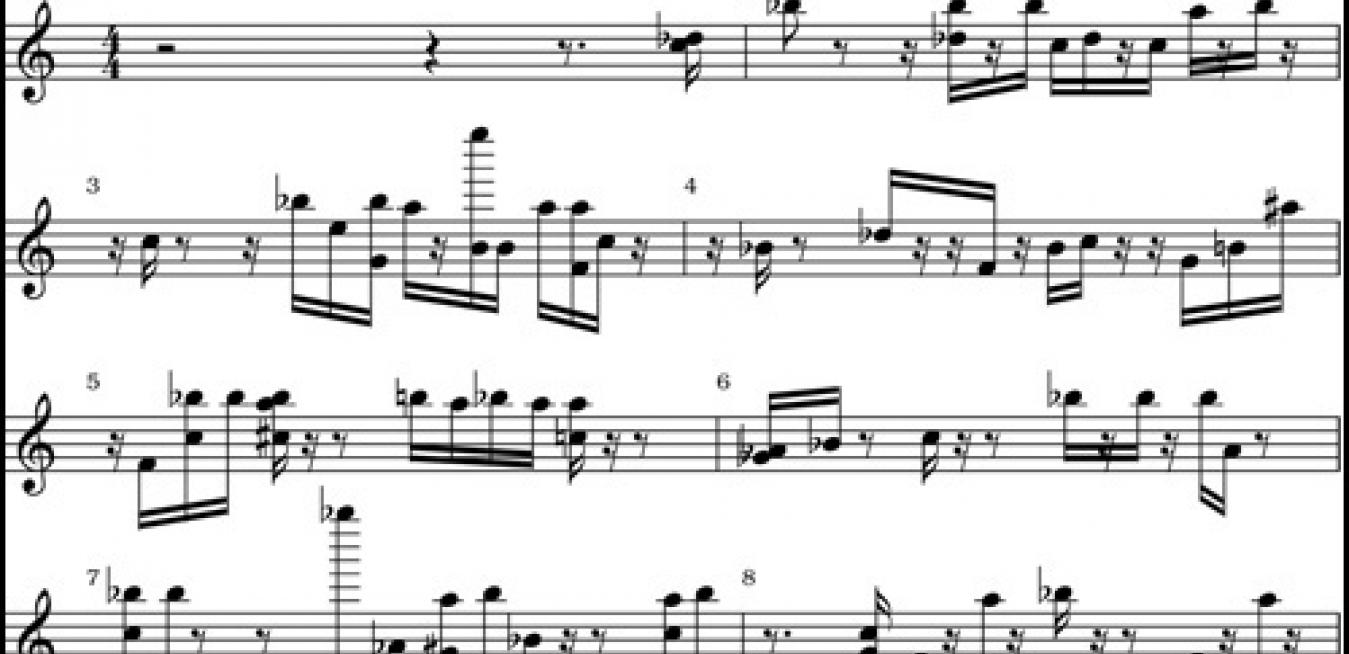Good engineers have many handy tools hanging from their belts. Jeff Bizub has a degree in music theory. “Music theory is the engineering behind the art,” Bizub says. He used the theory to build a software version of his ear. It listens for knocking sounds inside massive GE engine cylinders. The sounds herald errant gas explosions that can cause cracks and severe engine damage. Bizub transcribed his knocking recordings into notes and set them in a short musical piece titled Knock Music.
Knock, Knock: Jeff Bizub turned sounds of engine trouble into music. “When I was hearing the knocking frequencies, I was hearing notes,” he says.
Bizub is a senior product engineer at GE’s Waukesha engine plant. But he also holds a degree in music theory from the Wisconsin Conservatory of Music. A few years ago, he tried to solve a problem afflicting large spark ignition engines. These engines work the same way as the engine inside ordinary passenger cars, but are much larger. The Waukesha 275GL* gas engine, for example, generates 4,800 horsepower and clocks in at 66,000 pounds. It can power a small power plant.
The cylinders of such engines are so large, almost 11 inches in diameter, that the heat and pressure inside can ignite hot gas squeezed against the wall of the cylinder before the flame from the sparkplug at the center gets to it. That’s when trouble starts. There are now two flame “fronts” traveling in opposite directions, one from the wall and the other from the center. When these fronts crash into each other, they make the walls of the cylinder vibrate, emitting a characteristic knocking sound. This is called “knock.” Uncontrolled knocking can cause dangerous piston and engine damage, not to mention less power and more emissions.
Engineers used to listen for just the one frequency of the knocking sound but Bizub, who has perfect hearing, had a different idea. “The engine is like a musical instrument,” he says. “The shape of a flute or a clarinet plays a dramatic role in the sound they produce.” What if he could use music theory to decipher and tame knocking?
Bizub started running tests with an engine going into knock in GE’s Waukesha engineering lab. “I put my ear against the cylinder and could hear even with earmuffs on the multiple frequencies inside,” he says. “I knew that there was a center frequency related to bore size, but as with any instrument you’ll have multiple vibrations that will occur.”
Some of the knocking frequencies were inaudible to an untrained ear. But what if he built a machine with perfect pitch that could hear knock and also ignore false positives. “The first line of defense is to determine very accurately when it is true knock and not some other noise,” he says. Bizub convinced his boss to buy a 16-channel digital recorder in a music store for $1,200. He also purchased a suite of music software to analyze the spectrum and the frequency of the knocking sounds, and a 64-band equalizer to amplify the inaudible frequencies related to knock. “The idea was to capture these sounds as wave files, analyze them with the music software, and plot out what’s going on,” he says.
Bizub and a team of researchers used the results to write industrial software and algorithms that now sit inside a module attached to every Waukesha engine, listen for knocking, and adjust and retard ignition if they hear the tell-tale knock sound. The device is called Engine System Manager* (ESM). The ESM has much better signal to noise ratio that standard methods. It detects knocks more accurately and at lower, less dangerous amplitudes. It keeps the engine humming, adjusting ignition timing proportionally to the severity of the knocking.
But Bizub did not stop there. “When I was hearing the knocking frequencies, I was hearing notes,” he says. “When you study composition music theory, you work on ear training and transcribe sounds in your head to musical pitches so you can understand them further.” He took engine knocking samples, one from a big bore rich burn engine and the other from a lean burn machine, added some echo for ambiance, and called the score Knock Music. “Like electronic music or early R&B rap music, I was stringing samples together and creating something new,” he says. “I can’t take credit for writing the music because really the engines wrote it.”
* Trademark of the General Electric Company





